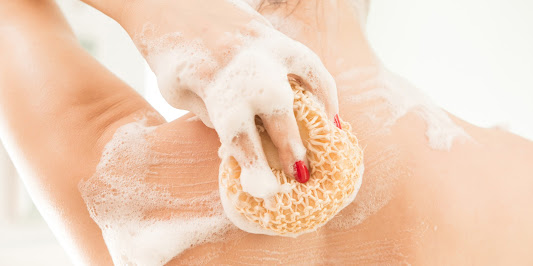All About Sodium Lauryl Sulfate
[7] Duck into the water , by Issac Quesada
Sodium Lauryl Sulfate is commonly known as SLS, which is a surfactant which is a material help to reduce the surface tension of the dissolved liquid [2]. SLS has many alternative names such as Sodium salt, sulfuric acid and many more. The molecular formula for sodium Lauryl Sulfate is Na SO4 C12H25[2]. The parent compound is Dodecyl sulfate. SLS can be very dangerous because it can be flammable, corrosive or irritant if used or exposed to as raw materials or in very large quantities. Although it's not very toxic to humans if not exposed to it in large quantities or inhaled directly into the body[1].
SLS is produced from natural vegetable oil such as (coconut oil or palm oil ) it also can be produced from petroleum [6]. The process involved with heating the coconut oil in water with sodium hydroxide. The following processes are converted to fatty acids, termed hydrogenation, in fatty alcohols. Lauryl alcohol can then be turned into lauryl sulfate [6]. SLS is the most common ingredient in everyday life such as in the shampoo, toothpaste and cleaning product because of their properties to mix oil with water to create foam [3].
SLS has many useful properties because the surfactant component can decrease the surface tension of water, lower the work necessary to develop the foam and improve the stability of its bubbles [4]. Furthermore, it help to extract grease from your scalp, due the surfactant modules have a water-soluble end and oil soluble ends [4]. Small amount of SLS is considered to be safe thus it can build up in the body from over usage of the product which can be danger therefore there are many alternative companies using now days a SLS free for example, SLSA (sodium lauryl sulfoacetate), Sodium Cocoyl Glycinate, and Lauryl glucoside[2]. There are many controversies with products that contain SLS which may cause cancer or stripes the oil from the skin, but no evidence has proven that SLS linked with these controversies [5].
Reference
[1] Bondi, C. A., Marks, J. L., Wroblewski, L. B., Raatikainen, H. S., Lenox, S. R., & Gebhardt, K. E. (2015). Human and Environmental Toxicity of Sodium Lauryl Sulfate (SLS): Evidence for Safe Use in Household Cleaning Products. Environmental health insights, 9, 27–32. https://doi.org/10.4137/EHI.S31765
[2] National Center for Biotechnology Information (2021). PubChem Compound Summary for CID 3423265, Sodium dodecyl sulfate. Retrieved February 2, 2021 from https://pubchem.ncbi.nlm.nih.gov/compound/Sodium-dodecyl-sulfate.
[3] Schaefer, A. (2019, February 27). Is it safe to use products with sodium lauryl Sulfate (SLS)? Retrieved February 07, 2021, from https://www.healthline.com/health/beauty-skin-care/what-is-sodium-lauryl-sulfate#products-with-sls
[4] Is sodium lauryl Sulfate really as bad as everyone says? (2020, November 13). Retrieved February 07, 2021, from https://thedermreview.com/sodium-laurel-sulfate/
[5] Sodium lauryl SULFATE, learn the facts and the potential dangers. (2019, May 06). Retrieved February 07, 2021, from https://slsfree.net/
[6] Gilani, N. (2019, March 02). What is sodium Lauryl Sulfate? Retrieved February 07, 2021, from https://sciencing.com/sodium-lauryl-sulfate-6320871.html
[7] https://unsplash.com/photos/no2bXM6QpBk



Comments
Post a Comment